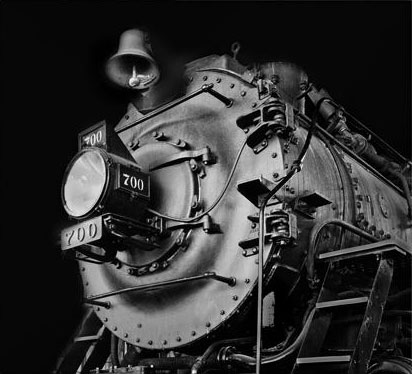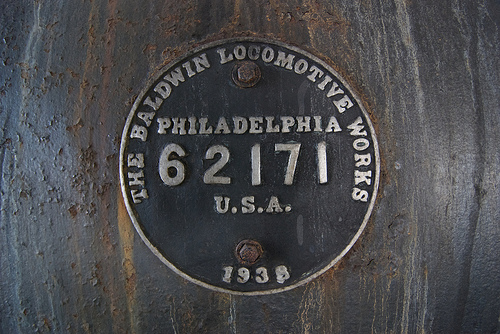We're off to the State of Washington! Listen to that marvelous whistle!!!
The SP&S 700
|
|

Photo by David Roy
SP&S Service History
From 1912 onward, the Spokane, Portland & Seattle Railway provided the best freight and passenger route from Portland and the Columbia River Valley toward the east. Despite the fact that the railroad formed this important link, traffic on the new line was slow to develop, partially due to the intra-family competition between its builders, the Great Northern and Northern Pacific. Having no real need of the newest and most powerful locomotives, at first nearly all of the SP&S's engines were hand-me-downs from its parents. However, by the mid-1930s the railroad was woefully underpowered. Its largest passenger locomotives were Pacifics (4-6-2s), and its largest freight engines were Mikados (2-8-2s), with the newest of these having been built in 1920. The SP&S had a hard time competing against the newer, larger power owned by the Union Pacific and operated on the competing ex-OR&N line just across the Columbia River. Finally, in 1937, NP and GN allowed the SP&S to purchase its first new locomotives: three Northerns (4-8-4s) classed E-1 and six Challengers (4-6-6-4s) classed Z-6. The new SP&S engines were added onto Northern Pacific orders and were identical in design to NP's class A-3 Northerns and class Z-6 Challengers except that they were built to burn oil instead of coal.
Builder's Plate of the SP&S 700
Photo by Chris Chen
During its regular service life, The Lady played an important role in developing and maintaining the prominence enjoyed by the City of Portland, and it is an integral part of the city's history and culture as well as that of the Columbia River Valley and eastern Washington. Recognizing this, the SP&S donated the 700 to the City of Portland in the final days of steam, sparing it from the scrapper's torch. The locomotive remains the property of the City, but it is officially under the care of the PRPA. Visit our page on Portland's railroad history or peruse the websites of the Pacific Northwest Chapter of the National Railway Historical Society and the Spokane, Portland & Seattle Railway Historical Society to deepen your understanding of the important role that railroads played in the development of the Northwest.
More info from this page continues at:
http://www.sps700.org/rollingstock/sps700.shtml
Just LOVE the sound of the steam. Thanks for posting this. I'm the mother of funnelfan.
ReplyDeletegoogle that name for photos of trains in the Pacific NW and Spokane.
Welcome aboard! Just love funnelfan - it's just a wonderful, wonderful site! I so miss the sound of trains. There are none where we now live. (steam is my favorite). Can't get enough of the sounds, pistons and gears!
Delete